In the spring of 2016 Legacy confirmed that oak wilt was present and active on our Reichert Nature Preserve. At that time several trees had already been claimed by the disease, and we knew it was time to act.
It took us two years to educate ourselves on oak wilt’s pathology and management, and to complete the work necessary to contain the disease. During that time, we did our best to put what we learned to good use through writing articles and hosting workshops to help educate others on oak wilt and its management.
Now, two years after the last trees were felled, it’s time to revisit the story.
The Reichert Preserve is 92 acres of mature oak-hickory woodlands and diverse wetland types, dotted with lakes and ponds and bordered on one side by Portage Creek. Approximately 10% (2 acres) of the forested area on the preserve was affected by oak wilt. The management strategy we selected in consultation with local experts meant cutting down all trees in the red oak group growing within a calculated distance from diseased trees. For Legacy, this meant over 60 red and black oaks. The work was challenging, both logistically and emotionally.
Anyone who has seen a recently logged woodland will understand: the scene was stark. A once thriving forest appeared bare and rent. But, time heals all wounds, and the natural world is resilient. While they’ve been changed, those woodlands are still and will remain functioning, evolving ecosystems.
At Legacy, we think the most sustainable approach to stewardship is to work with the natural communities in our care. With that principle in mind, we’ve been watching and waiting for the logged area to reveal its direction. With 30 mature trees now gone from the canopy, light has flooded the forest floor. The plant species present have, predictably, reacted to this influx of light. Fortunately, instead of seeing a rampant expansion of invasive plant species, the area has grown up primarily with Prunus serotina (wild black cherry) saplings. Black cherry trees are native to Michigan and an early successional species. This means they are some of the first tree species to begin the transformation of open areas into woodlands.
Our primary goal in stewarding the area impacted by our management of oak wilt is to support the development of a diverse and spacious overstory. Maintaining canopy gaps will allow ground layer flora, like bracken and lady ferns (Pteridium aquilinum and Athyrium filix-femina), woodland sunflower (Helianthus divaricatus), and whorled loosestrife (Lysimachia quadrifolia) to thrive alongside desirable native trees. Providing space between individual oak trees may also help to prevent the spread of a future oak wilt infection. We’ll continue to prioritize the removal of invasive shrubs from the area. Prescribed burns, like the one recently performed at the Reichert Preserve, will help to reduce the density of cherry saplings and further discourage the growth of non-native shrubs. Depending on the efficacy and speed of natural regeneration, we may plant oak and hickory saplings in the future, along with understory species associated with the dry-mesic southern forest community type such as Ostrya virginiana (ironwood) and Amelanchier arborea (juneberry).
This work will never be “done”; we will always monitor for oak wilt at the Reichert Preserve. Time, so far, has shown that our approach to oak wilt management was a success. At this time all identified oak wilt sites on and adjacent to the preserve are stable, with no ailing trees identified for two years (please knock on wood as you read this). Despite the feelings of loss associated with this story, the other side of that coin is becoming clear with time. Often when we lose one thing, we gain another. It has been remarkable and heartening to watch the impacted ecosystem rebound, and set forth on a path into a new future.
Related Articles:
Getting Ahead of Oak Wilt
Staying Ahead of Oak Wilt
Oak Wilt Part III: The Finale (for now)

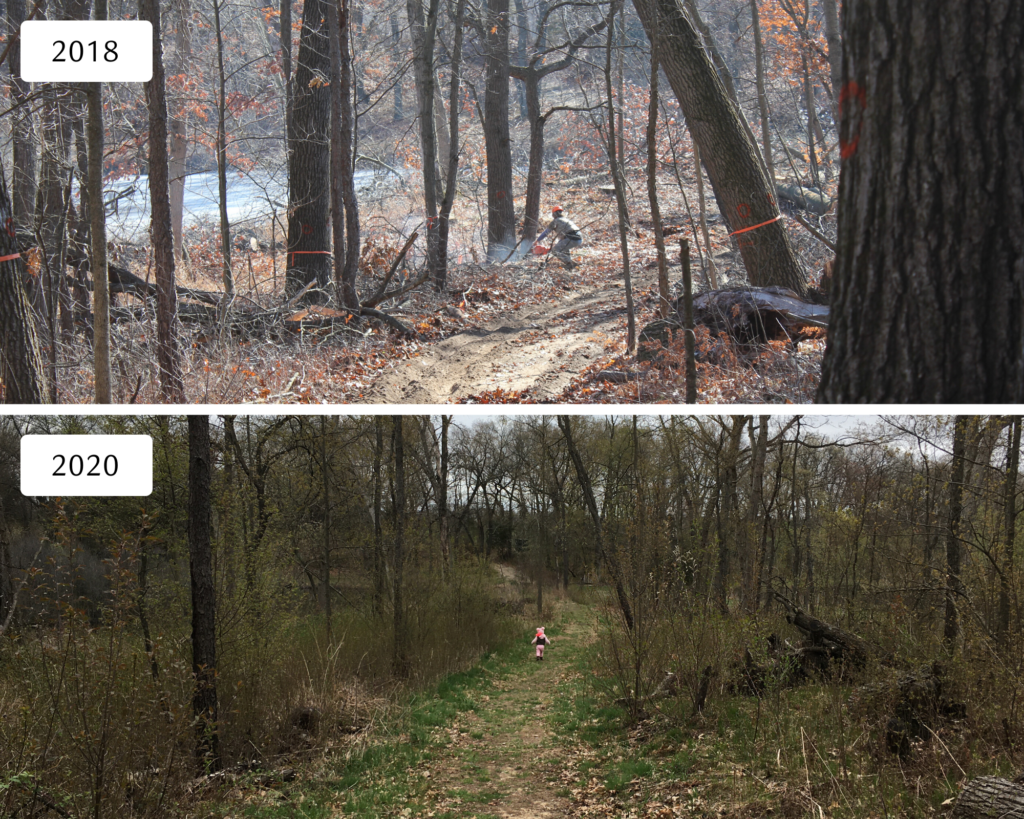
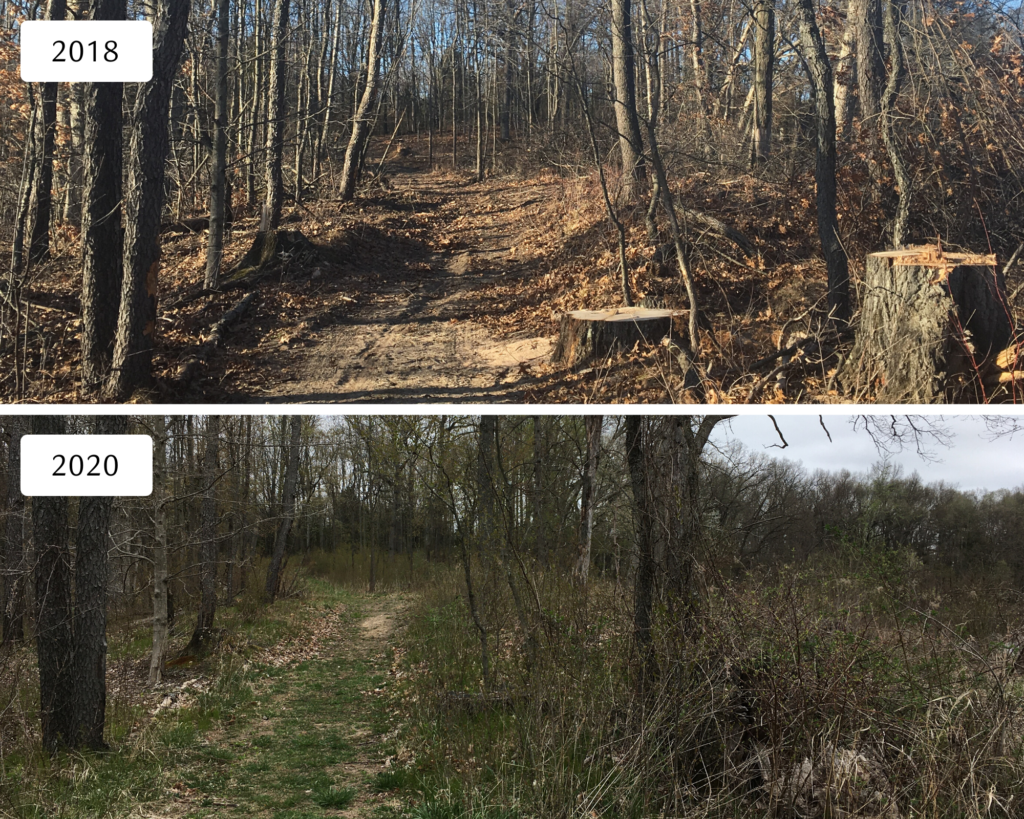
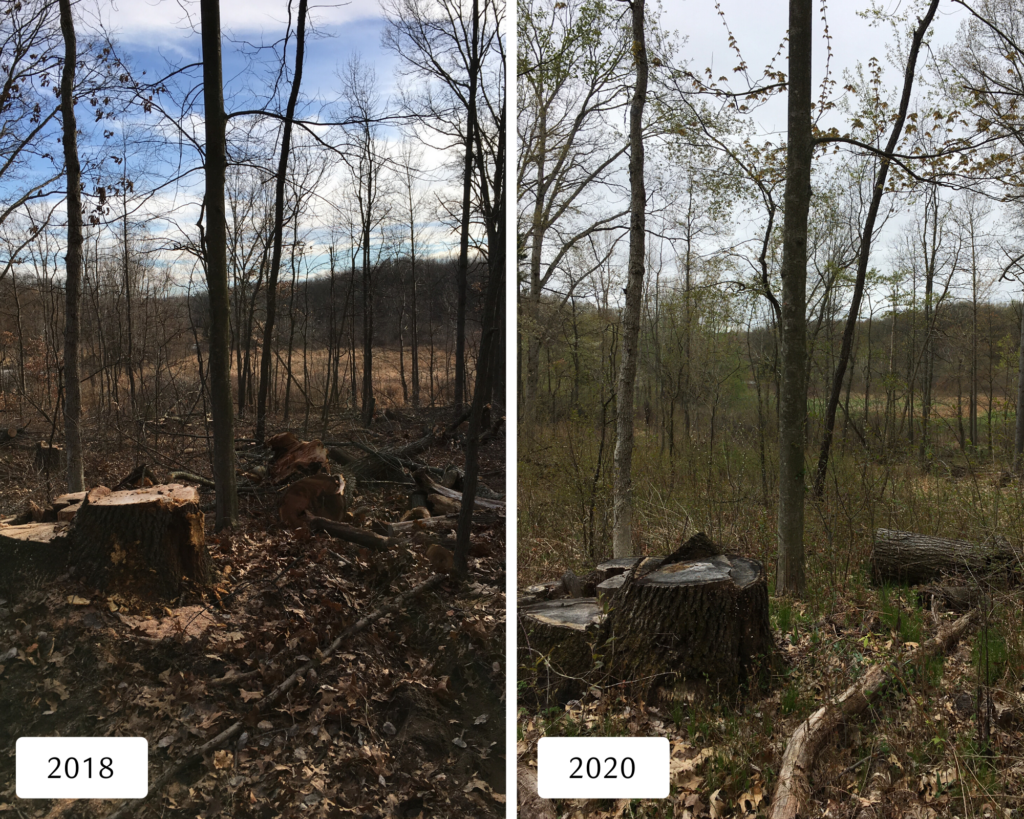
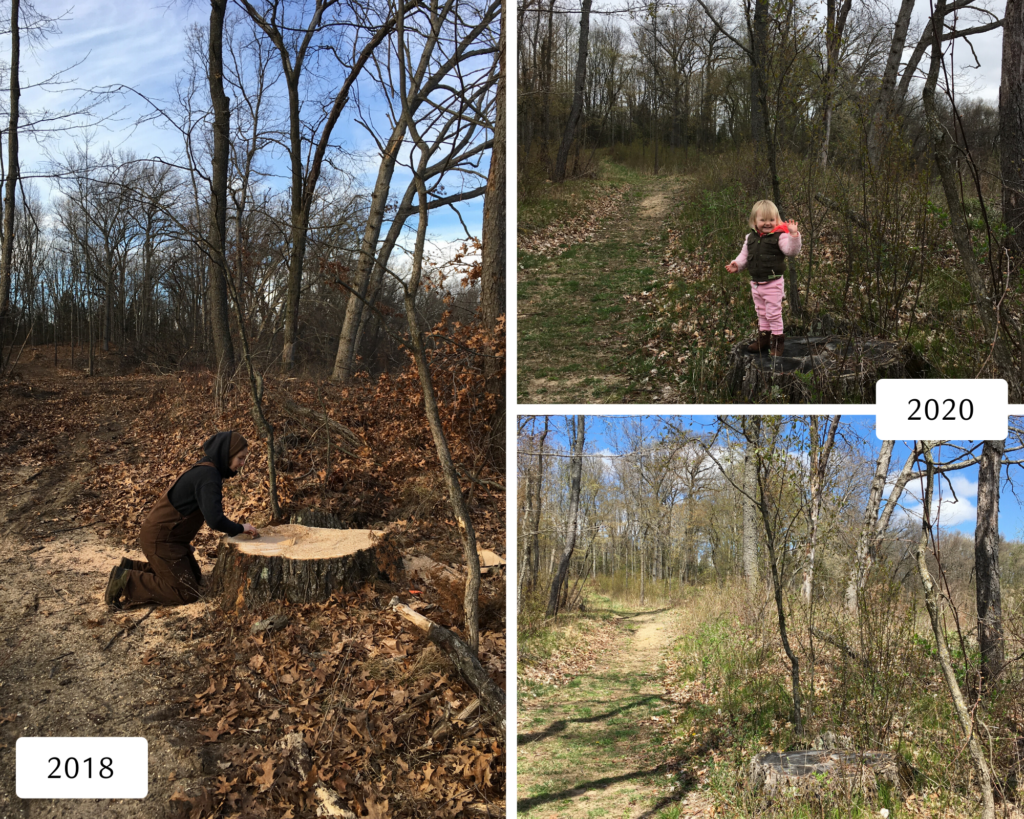
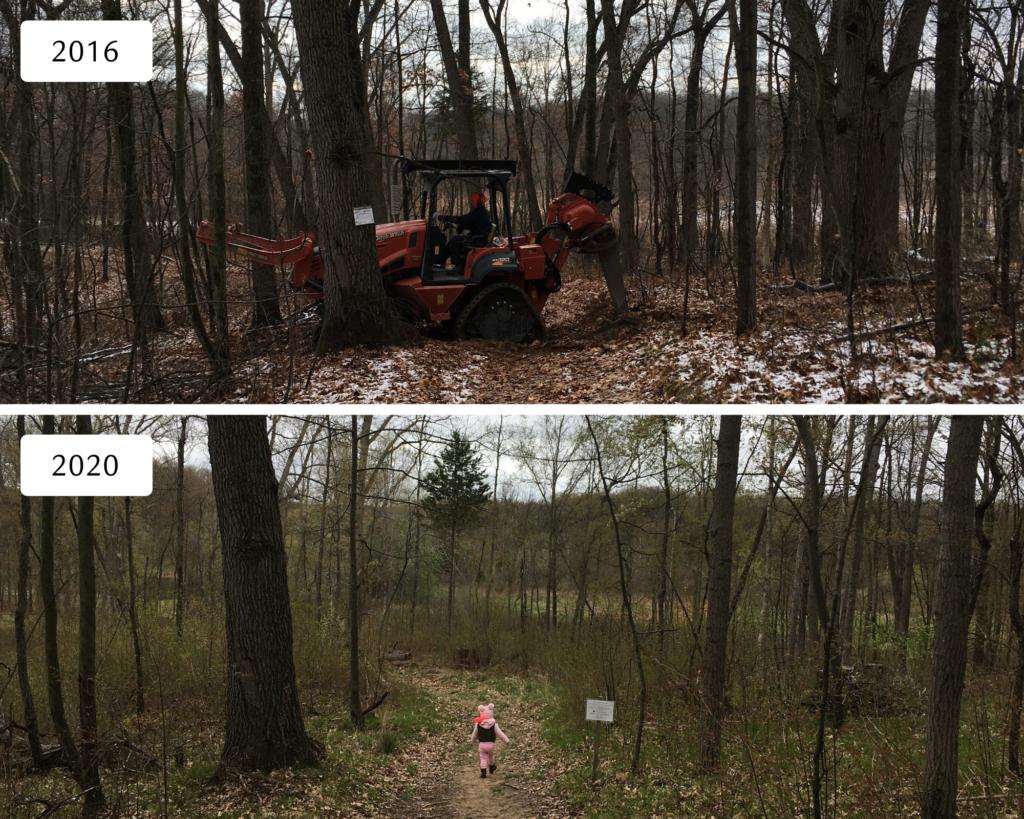
 RSS Feed
RSS Feed